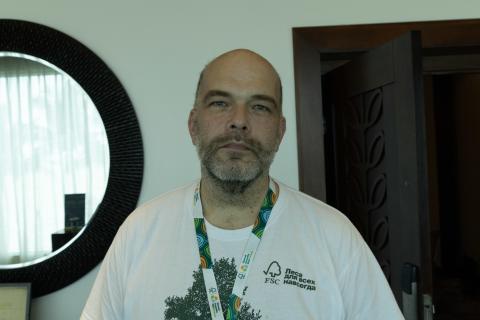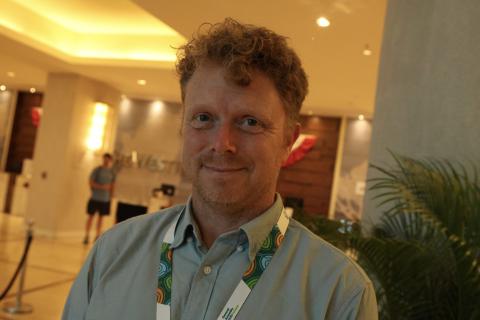Controlled Wood: hot in 2008, red-hot in 2011?
Transparency, consistency, credibility: words that express core values for FSC and are often heard in the debate surrounding FSC Controlled Wood. We asked Greenpeace how they see FSC's progress on this issue since Cape Town.
Transparency, consistency, credibility: words that express core values for FSC and are often heard in the debate surrounding FSC Controlled Wood. We asked Greenpeace how they see the development since then.
During the FSC General Assembly in 2008, Controlled Wood (CW) was arguably the most debated issue. Greenpeace was behind both CW motions: proposing motion 23; and seconding 24. We have asked forest campaigner Judy Rodrigues from Greenpeace International how she sees the development since 2008.
Controlled Wood evaluation: “Too little, too late”
Motion 23 (2008) called for an evaluation of the CW system, providing a basis for choosing either of three pathways at the 2011 assembly: 1. Eliminate CW 2. Develop the CW system to link more strongly to uptake of FSC certification or 3. Develop an alternative solution creating stronger uptake of FSC. Motion 24 (2008) required FSC to address the most pressing credibility issues surrounding Controlled Wood, placing specific focus on stakeholder consultations, transparency, and HCVF. |
Ms. Rodrigues says: “I am disappointed about the implementation of Motion 23 that asked FSC to evaluate the CW system. It is coming too little, too late. It evaluates the current status, while the motion’s intent was to monitor if and how companies are committed to continuous uptake of FSC (i.e., monitoring input volumes, product line growth under mix and pure labels and whether a trend of dilution under the FSC mixed label was occurring) including encouraging their CW suppliers to move towards FSC. We wanted to see more commitment to move CW upstream to full certification.”
“I need to be convinced that Controlled Wood can’t be eliminated and this is where the evaluation comes in. There are issues with small forest holders, but we question why large enterprises can’t meet full certification.”
Credibility still at stake
As for Motion 24, seeking to address the system’s current credibility issues, Ms. Rodrigues says: “The credit system is still not working well enough. Uncontrolled material is entering the system and ending up in labelled products, and this is a huge risk to FSC’s credibility. Most consumers can’t distinguish between FSC Mixed and FSC Pure.”
“During the past three years, we have uncovered evidence for non-compliance with the Controlled Wood standard (FSC-STD-40-005), such as insufficient stakeholder consultation with respect to High Conservation Value Forest (HCVF) and unresolved social conflicts of substantial related to traditional rights . We have evidence of non-compliance of cases in Finland, Canada and Congo DRC. Currently we are gathering evidence in Russia which is already revealing that illegal timber is entering the system under CW.”
“ASI isn’t doing enough to quality check field audits and to ensure that field verification of HCVF for CW is equally stringent as for full certification. That needs to change immediately,” she says, referring to Accreditation Services International, the company in charge of overseeing the performance of Certification Bodies.
Risk assessments on shaky ground
“We were expecting FSC to take more control of risk designation, initially through the Global Forest Registry, and then through the FSC National Offices," continues Ms Rodrigues. "Only five national risk assessments have been endorsed; we were expecting a lot more”.
“There are inconsistencies among companies conducting their own CW risk assessments and this is disconcerting. And in case of unspecified risk, companies are not obliged to publish the results of their field assessments. Transparency is a big issue for us and we’d like to see the evidence for low risk designation”.
Need for substantial changes
Based on these concerns, Greenpeace is demanding substantial changes in the CW system. Ms. Rodrigues says, “FSC must take control over the risk designation and the CW standard must be revised to remove the possibility of companies doing their own risk assessments. And we want to see a sunset clause that limits the time an area can supply CW. We don’t want to see any extended excuses by the members and FSC for not adopting the sunset clause. These issues are addressed by 2011 motions on CW”.



